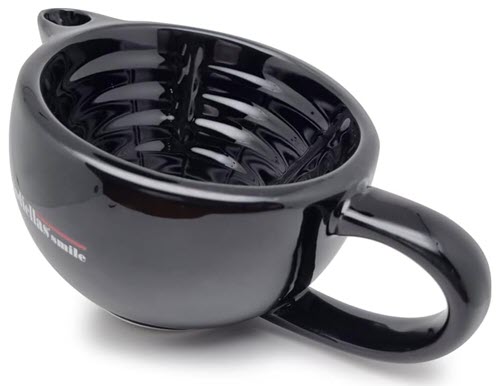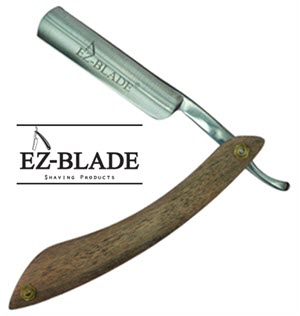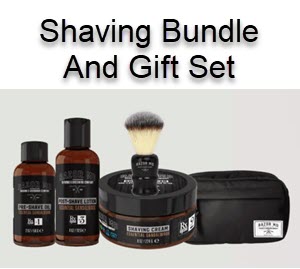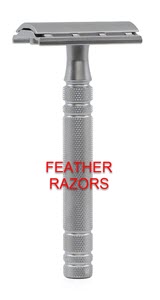Scuttle Shaving: Unlocking the Secret to a Perfect Shave
Embracing Tradition: The Revival of Scuttle Shaving
A quiet but profound renaissance is underway in personal grooming—a return to the time-honored practice of scuttle shaving. Once a staple in the early 20th century, this traditional method finds new life among modern aficionados seeking a more refined, enjoyable, and practical shaving experience. But what exactly is scuttle shaving, and why is it garnering such attention? Let’s delve into the benefits and allure of this classic technique.
The Scuttle Shaving Experience
A shaving scuttle is a specialized vessel designed to keep shaving lather warm throughout the shave. Resembling a small teapot with a built-in bowl on top, it serves a dual purpose: heating the lather and providing a surface to whip up a rich foam. The resurgence of interest in scuttle shaving is not merely about nostalgia; it’s about reclaiming a level of luxury and efficacy in grooming routines that modern shortcuts often overlook.
Warm Lather, Closer Shave
The primary advantage of using a scuttle comes from the warmth of the lather. Warm lather softens facial hair and opens pores, allowing for a closer, smoother shave with reduced irritation. This warmth enhances the shaving cream’s properties, making the razor’s glide smoother and reducing the risk of nicks and cuts. It’s a simple pleasure that transforms a daily chore into a moment of indulgence.
Richer Lather, Better Protection
Creating lather in a scuttle, typically with a shaving brush—produces a creamier, more protective foam than one might achieve with colder lather. This rich lather provides a protective barrier between the blade and the skin, ensuring a more comfortable shave that leaves the skin feeling moisturized and soothed.
A Ritual of Mindfulness
Scuttle shaving encourages a slower, more deliberate approach to grooming. It’s a practice that demands mindfulness, as one takes the time to prepare the lather, appreciate the warmth, and focus on the shave. This ritualistic aspect can transform shaving from a hurried task into a moment of self-care and reflection, offering a break from the fast pace of modern life.
Environmental and Economic Benefits
The resurgence of scuttle shaving aligns with a growing emphasis on sustainability and cost-effectiveness. Traditional shaving soaps and creams, used with a brush and scuttle, produce less waste than disposable razors and canned foams. Furthermore, these products tend to last longer, offering savings over time and reducing the environmental footprint associated with shaving.
The Aesthetic Appeal
Beyond its practical benefits, a shaving scuttle is a statement piece—a nod to the elegance of bygone eras. These vessels come in various designs, from the antique to the modern, adding a touch of style and sophistication to the bathroom. It’s a functional piece of art that celebrates the ritual of shaving.
The revival of scuttle shaving is more than a trend; it’s a rediscovery of a grooming practice that prioritizes quality, comfort, and sustainability. By embracing this traditional method, individuals enhance their shaving experience and connect with a piece of history, finding joy in the ritual and elegance in the routine. As we look back for inspiration, the humble shaving scuttle stands out as a testament to the timeless pursuit of personal care and satisfaction.
Mastering the Art of Scuttle Shaving: Techniques and Tips for a Superior Shave
The resurgence of traditional wet shaving has brought the shaving scuttle back into the spotlight, offering aficionados a chance to elevate their grooming ritual. A shaving scuttle is a unique design to keep shaving lather warm; it not only adds a touch of luxury to the process but also enhances the quality of the shave. However, achieving the perfect shave requires more than just the right tools—it demands technique. Here, we explore scuttle shaving, offering techniques and tips to help you achieve the best shave possible while addressing common shaving woes like razor burn, ingrown hairs, and irritation.
Brush Loading: The First Step to a Perfect Lather
Loading your brush correctly is essential to building a rich, protective lather. Start by soaking your shaving brush in warm water to soften the bristles. Gently shake off the excess water, then swirl the brush over your shaving soap or cream in the scuttle’s top bowl. The goal is to coat the bristles with a thin layer of soap and wait to create the lather. This process, known as “loading” the brush, is the foundation for a creamy lather that will protect your skin and facilitate a smooth shave.
Lather Building: Crafting the Perfect Foam
With your brush loaded, it’s time to build your lather. Add a small amount of warm water to the scuttle, and use circular motions to whip the soap into a thick, creamy foam. The warmth from the scuttle will help the lather to expand and become richer. The key here is patience; take your time to slowly add water and air, building the lather until it reaches the desired consistency. A well-built lather should be thick enough to cling to your skin but not so dense that it clogs your razor.
Shaving Angles: The Secret to a Close, Comfortable Shave
The angle at which you hold your razor can significantly affect the quality of your shave. A 30-degree angle between the blade and your skin is ideal for most safety razors. This angle allows the blade to cut the hair efficiently without scraping the skin. Start with short, light strokes and let the razor’s weight do the work. Adjust the angle as necessary to navigate the contours of your face, ensuring that the razor glides smoothly without tugging or pulling.
Avoiding Common Shaving Issues
Razor Burn and Irritation: To prevent razor burn and irritation, ensure your skin is well-prepped and moist before shaving. Use a warm lather to soften the hair and open pores. Always shave with the grain on the first pass, and avoid going over the same area multiple times.
Ingrown Hairs: Ingrown hairs are often the result of shaving too closely or against the grain. To minimize the risk, exfoliate your skin regularly to remove dead skin cells and free trapped hairs. Consider a single-blade razor, less likely to cut hair below skin level.
Post-Shave Care: Finish your shave with cold water to close the pores, followed by a soothing aftershave to hydrate and protect the skin. This step is crucial for maintaining healthy, irritation-free skin.
With its rich tradition and superior results, Scuttle shaving is an art form in its own right. By mastering the techniques of brush loading, lather building, and maintaining the correct shaving angles, you can transform your shave from a mundane task into a luxurious ritual. Remember, the key to a perfect shave lies in the tools, care, and attention you bring to each step. With these tips and techniques, you’re well on your way to achieving a closer, more comfortable shave, free from the common pitfalls of razor burn, ingrown hairs, and irritation.
Elevating Your Shave: The Benefits of Quality Shaving Soaps and Creams
Shaving soap or cream is pivotal in the quest for the perfect shave, especially when paired with the traditional scuttle. These foundational elements of wet shaving are not merely about creating lather; they are about enhancing the shaving experience, offering protection to the skin, and ensuring a smooth, close shave. This article delves into the benefits of selecting the best shaving soaps and creams for use with a scuttle, focusing on those that deliver a rich lather, superior moisturization, and robust protection during the shave.
The Rich Lather Advantage
A quality shaving soap or cream is designed to provide a thick and rich lather, with characteristics that are amplified when using a scuttle. The warm lather helps soften the facial hair and lift it away from the skin, allowing for a closer shave with minimal effort. This rich lather is a cushion, reducing friction between the skin and the razor blade and minimizing the risk of nicks, cuts, and razor burn. Building this lather with a brush also exfoliates the skin, removing dead skin cells and promoting a healthier complexion.
Superior Moisturization for Skin Protection
Shaving can be harsh on the skin, stripping away natural oils and causing dryness or irritation. High-quality shaving soaps and creams are formulated with nourishing ingredients such as glycerin, lanolin, shea butter, and essential oils that provide necessary hydration. These ingredients help to maintain the skin’s moisture, leaving the skin feeling soft, supple, and well-protected throughout the shave. The moisturizing properties are particularly beneficial for sensitive skin, as they help soothe and prevent irritation.
Enhanced Protection During the Shave
Beyond moisturization, the best shaving soaps and creams contain ingredients that offer additional protection to the skin. These include aloe vera for its soothing properties, tea tree oil for its antiseptic qualities, and various vitamins and antioxidants to support skin health. This layer of protection is crucial in preventing razor burns, irritation, and ingrown hairs, ensuring a comfortable shave from start to finish.
Choosing the Right Product
When selecting a shaving soap or cream for use with a scuttle, consider the following:
- Skin Type: Choose a product that matches your skin type—oily, dry, sensitive, or combination. Look for soaps and creams with ingredients that address specific skin concerns.
- Scent: Personal preference plays a role here, with options ranging from classic sandalwood and lavender to unscented formulations for those with sensitive noses or skin.
- Ingredients: Opt for products with natural ingredients and avoid harsh chemicals or artificial additives that can irritate the skin.
- Performance: Look for reviews or recommendations from fellow wet shavers to find products known for their ease of lathering, moisturizing properties, and overall performance.
The choice of shaving soap or cream is integral to achieving an enjoyable and practical shaving experience, especially when using a scuttle. You can elevate your shave to new heights of comfort and closeness by selecting a rich lather, superior moisturization, and robust protection. Remember, the best shave is not just about removing facial hair—it’s about caring for your skin. With the suitable shaving soap or cream, you can look forward to a ritual that leaves your skin feeling refreshed, healthy, and impeccably smooth.
The Charm of Artisanal Shaving: Embracing Handmade Accessories
Personalization and Craftsmanship
One of the most significant benefits of artisanal shaving accessories is their level of personalization and craftsmanship. Artisans pour their skill, passion, and attention to detail into every piece, ensuring that every item is unique. Custom-made scuttles, for example, can be tailored to individual preferences in size, shape, and color, making them a perfect fit for one’s shaving routine and aesthetic tastes. This personal touch extends to brushes and razors, where materials, handles, and bristle types are selected to match the user’s specific needs and preferences.
Superior Quality and Durability
Handmade shaving accessories are often made from higher-quality materials than their mass-produced counterparts. Artisans typically select durable, premium materials that look beautiful and are built to last. For instance, shaving brushes may feature hand-turned wooden handles and premium badger or synthetic bristles for optimal water retention and lathering capabilities. Similarly, custom scuttles are crafted from fine ceramics or stoneware, offering excellent heat retention for a warm lather throughout the shave. This focus on quality ensures that these accessories perform better and stand the test of time.
Unique Shaving Soaps and Creams
Artisanal shaving soaps and creams are another facet of the handmade grooming world, offering unique scents and formulations that are often more natural and skin-friendly. Small-batch production allows for a greater focus on quality ingredients, such as essential oils, shea butter, and natural glycerin, providing a luxurious lather that’s both effective and gentle on the skin. These unique formulations cater to a wide range of skin types and preferences, from sensitive to oily, and offer scents that range from classic to contemporary, ensuring there’s something for every taste.
Supporting Small Businesses and Sustainable Practices
Choosing artisanal and handmade shaving accessories means supporting small businesses and sustainable practices. Many artisans are committed to ethical sourcing and use eco-friendly materials and packaging to reduce environmental impact. By purchasing from these creators, consumers receive a product made with care and contribute to a more sustainable and ethical grooming industry.
The Experience of Luxury and Ritual
Finally, incorporating artisanal shaving accessories into one’s grooming routine elevates the experience from mundane to luxurious. The tactile pleasure of using a handcrafted brush, the warmth of lather from a ceramic scuttle, and the unique scents of artisanal soaps and creams all contribute to a sense of well-being and indulgence. This heightened experience makes the act of shaving something to look forward to, transforming it into a moment of self-care and relaxation.
The benefits of artisanal and handmade shaving accessories extend far beyond their functional use. They offer a connection to the craftsmanship and tradition of wet shaving, an opportunity to personalize the grooming experience, and a commitment to quality and sustainability. Whether through a custom-made scuttle, a hand-turned brush, or a batch of unique shaving soap, embracing artisanal accessories is a step towards a more luxurious, satisfying, and mindful shaving routine.
Sustainable Grooming: The Eco-Friendly Edge of Traditional Wet Shaving
In recent years, there’s been a growing consciousness around the environmental impact of our daily routines, leading many to seek more sustainable lifestyle choices. Grooming practices, particularly shaving, are no exception. Traditional wet shaving, characterized by using a scuttle, safety razors, and natural soaps or creams, presents an eco-friendly alternative to the disposable and plastic-heavy options that dominate today’s market. This article explores the benefits of traditional wet shaving practices in fostering a more sustainable and environmentally friendly grooming routine.
Reduced Plastic Waste
One of the most significant environmental benefits of traditional wet shaving is the drastic reduction in plastic waste. Disposable razors and plastic cartridges contribute to the millions of tons of plastic waste in landfills and oceans yearly. In contrast, safety razors used in traditional wet shaving are made from durable materials like stainless steel and can last a lifetime with proper care. The only part that needs replacing is the blade, which is minimal in size and can be recycled, reducing the environmental footprint.
Eco-friendly Shaving Accessories
Traditional wet shaving accessories, including scuttles, brushes, and stands, are typically made from high-quality, sustainable materials. Scuttles, for example, are often ceramic, and shaving brushes are made with wooden handles and natural bristles or high-quality synthetic alternatives. These products offer superior performance and longevity and avoid the plastic and synthetic materials prevalent in modern grooming products, further contributing to an eco-friendly routine.
Natural Soaps and Creams
The soaps and creams used in traditional wet shaving are usually crafted from natural ingredients, free from the chemicals and aerosols of canned shaving foams and gels. These artisanal products often come in minimal or recyclable packaging, reducing waste. Moreover, because they are concentrated, they last longer, meaning less frequent purchases and less packaging waste over time.
Energy Conservation
Traditional wet shaving with a scuttle also contributes to energy conservation. The scuttle creates a warm lather without electricity, unlike the heated shaving cream dispensers that have become popular. By relying on the simple addition of hot water, traditional wet shaving minimizes energy consumption associated with grooming.
Supporting Small Businesses and Artisans
Adopting traditional wet shaving practices supports small businesses and artisans who create handmade, sustainable shaving products. It helps reduce the carbon footprint associated with mass production and distribution and promotes a more localized and sustainable economy.
Long-term Cost Savings
While not a direct environmental benefit, the long-term cost savings associated with traditional wet shaving deserve mention. High-quality razors, brushes, and scuttles represent a one-time investment that, with proper care, can last for decades. It contrasts sharply with the continuous expense of disposable razors and cartridges, offering economic and environmental savings.
Embracing traditional wet shaving practices is more than a nod to the past; it’s a step forward in reducing our environmental impact. Durable, reusable tools like the scuttle and safety razor, combined with natural soaps and creams, offer a sustainable alternative to the disposable, plastic-laden products that dominate the market. By switching to traditional wet shaving, individuals enhance their grooming experience and contribute to a more sustainable, eco-friendly world.
The Timeless Tradition: Exploring the Rich History of Wet Shaving
Wet shaving, the practice of using a blade with water and shaving soap or cream to remove facial hair, has a history dating back thousands of years. From the rudimentary shaving tools of ancient civilizations to the sophisticated equipment available today, wet shaving has evolved significantly, reflecting changes in technology, fashion, and societal norms. The history and evolution of damp shaving highlight the benefits of understanding this rich tradition and the resurgence of interest in traditional methods.
Ancient Beginnings
The origins of wet shaving can be traced back to the ancient civilizations of Egypt and Greece, where copper razors were used as early as 3000 BCE. Shaving was not only about personal grooming but also a sign of status and civilization. The Romans adopted shaving as a rite of passage for young men, and wet shaving became a symbol of cleanliness and refinement throughout the empire.
The Evolution of Shaving Tools
Over the centuries, shaving tools and techniques have undergone significant transformations. The straight razor, a folding blade that requires skill and precision, became the standard tool for wet shaving by the 18th century. The advent of the safety razor in the late 19th century, with its protective guard between the blade and the skin, made shaving safer and more accessible to the average man. In the 20th century, introducing disposable razors and electric shavers offered convenience but moved men away from the traditional wet shaving experience.
The Art of Lather and Scuttles
The creation of lather for wet shaving has its history, evolving from simple soaps to sophisticated creams and gels. Using a shaving brush to build a rich, warm lather became a hallmark of the traditional wet shave. The shaving scuttle, a vessel designed to keep the lather warm throughout the shave, emerged in the 19th century, adding a touch of luxury to the experience.
Resurgence of Traditional Wet Shaving
There has been a renewed interest in traditional wet shaving methods in recent years. This resurgence is driven by a desire for a closer, more enjoyable shave and concerns over the environmental impact of disposable razors. Men are rediscovering the benefits of using high-quality razors, brushes, and natural soaps or creams, appreciating the ritual and craftsmanship involved in traditional wet shaving.
Benefits of Understanding Wet Shaving History
Understanding the history of wet shaving enriches the shaving experience, connecting individuals to a centuries-old tradition of grooming. It fosters an appreciation for the evolution of shaving tools and techniques, inspiring a more mindful approach to personal care. Moreover, the resurgence of traditional methods highlights a shift towards sustainability, quality, and the artistry of shaving, offering a counterpoint to the disposable culture of modern grooming.
Conclusion
The history of wet shaving is a fascinating journey through time, reflecting changes in technology, culture, and societal values. By exploring the evolution of wet shaving, individuals can gain a deeper appreciation for the tradition and craftsmanship that define this timeless practice. The recent revival of traditional damp shaving methods underscores a desire for quality, sustainability, and a more personalized grooming experience, connecting the past with the present in pursuing the perfect shave.
- Bakblade 2.0: The Ultimate Solution for Back Hair Removal
- Best Ball Shaver for Sensitive Skin – 2024 Picks
- The Shaving Gel Hack That Beauty Gurus Don’t Want You to Know About!
- Henson Shaving: Where Design Meets Durability and Performance
- Caramel Honey Blonde Hair: Elevate Your Look
- Feather Razors: Precision Shaving for Every Skin Type
- Straight Razor Shaving: Unlocking a Closer, Smoother Shave
- Premium Safety Razors: Your Guide to Quality Shave
- Pros & Cons: Shaving Against the Grain Guide
- Maximize Your Shave: Norelco Sensotouch 3d Razor
- Best Aftershave for Men: Elevate Your Grooming
- Where to Buy A Straight Razor: Expert Stores & Online Tips
- Elevate Your Grooming Game with a Premium Shaving Kit
- Unlock Shine: The Ultimate Hydrating Cleansing Conditioner
- Styptic Pencils: Quick Fix for Minor Bleeds & Nicks
- Panasonic Men’s Shaver: Experience The Future
- Pre Shave Oil: Reduce Nicks & Razor Burn
- Van Der Hagen shaving soap review: A Closer Look
- Scuttle Shaving: Unlocking the Secret to a Perfect Shave
- Ogallala Bay Rum: A Timeless Scent for the Modern Gentleman
- Best Double Edge Razors: A Cut Above the Rest
- Master the Art of Shaving: Your Guide to Buying a Straight Razor
- How To Sharpen Electric Razor Blades: Quick Guide
- The Benefits of Aftershave: It’s Skin Care
- Secure & Stylish: Choosing the Best Travel Razor Case
- Master the Art of Shaving with Adjustable Safety Razors
- The Best Safety Razors You Can Find for a Superior Shave
- Cremo Shaving Cream: For the Ultimate Shave
- Simpson Shaving Brush: Your Best Shave Awaits!
- The Secret to a Perfect Shave? Unveiling the Edwin Jagger Safety Razor




